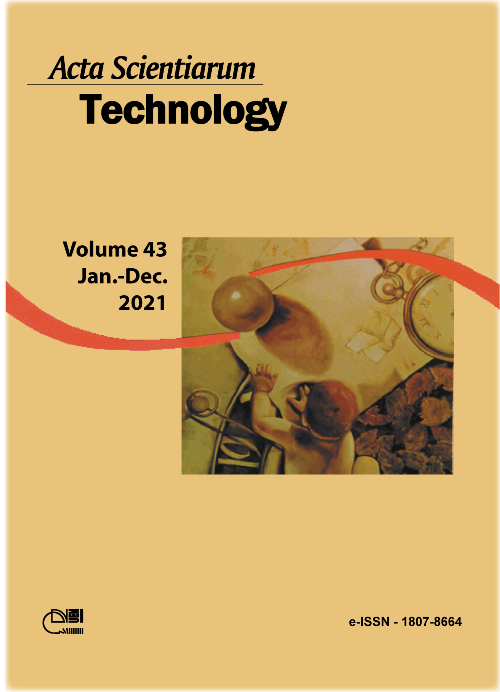Post-harvest quality of Campomanesia adamantium (Cambess.) O. Berg. in function of storage temperature
Abstract
Brazil has a large variety of native and exotic fruit species, including the gabiroba, which can be sources of income for the population. The objective of this study was to evaluate the post-harvest behavior of gabiroba fruit by maturity stage and storage temperature. The fruits were divided into two lots and stored at temperatures of 6, 12, 24 and 30°C. The first batch was used for the physical and chemical analysis of acidity, soluble solids, firmness, percentage of green color, and visual analysis; this batch was composed of green and yellow-green fruit. The second lot was intended for breath analysis, composed of green, yellow-green, and yellow fruits. The experiment was conducted in a completely randomized design with five replications. Data were analyzed using descriptive statistics. Considering the evaluated characteristics, the gabiroba soluble solid/titratable acidity ratio values should be approximately 4.0 for the fruits to be considered acceptable for consumption. For the preservation of the post-harvest quality of gabiroba, it is indicated that the harvest is carried out at the green stage of maturation and that they are stored at a temperature of 6°C. The highest respiratory rates were observed in fruits harvested at the yellow stage, not being recommended its storage.
Downloads
Copyright (c) 2021 Acta Scientiarum. Technology

This work is licensed under a Creative Commons Attribution 4.0 International License.
DECLARATION OF ORIGINALITY AND COPYRIGHTS
I Declare that current article is original and has not been submitted for publication, in part or in whole, to any other national or international journal.
The copyrights belong exclusively to the authors. Published content is licensed under Creative Commons Attribution 3.0 (CC BY 3.0) guidelines, which allows sharing (copy and distribution of the material in any medium or format) and adaptation (remix, transform, and build upon the material) for any purpose, even commercially, under the terms of attribution.
Read this link for further information on how to use CC BY 3.0 properly.





















